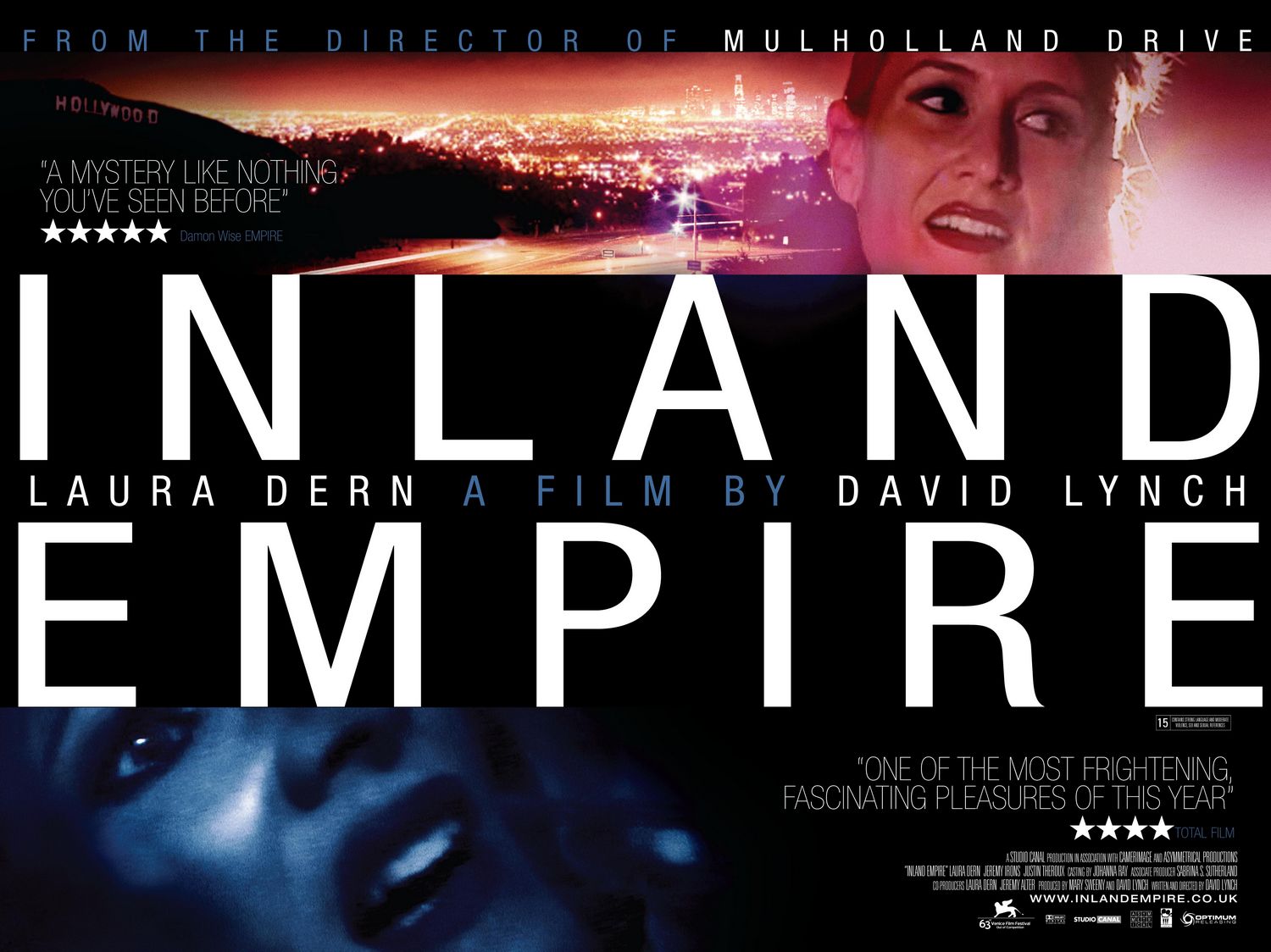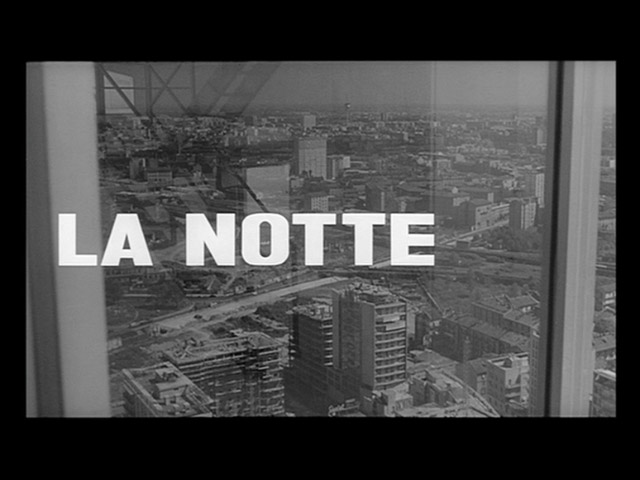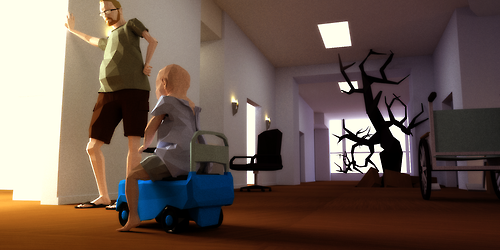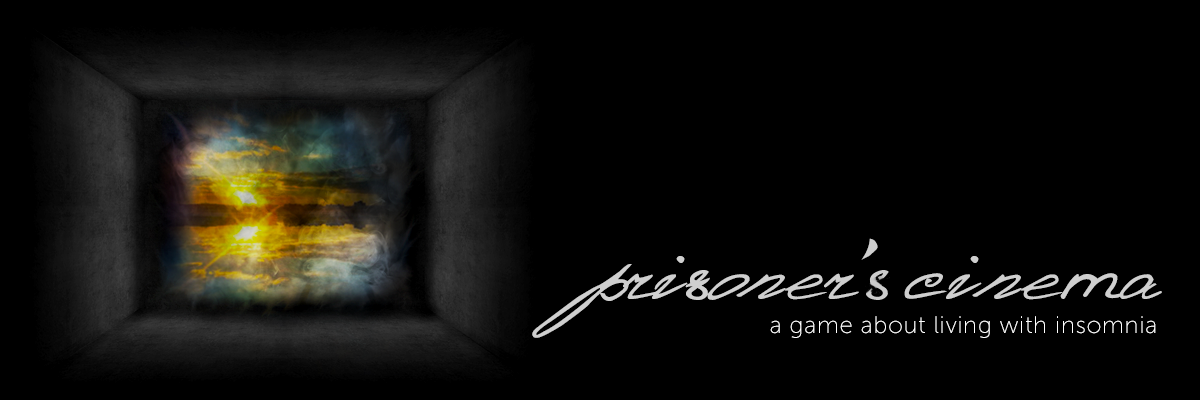We are Arseniy Klishin, producer and sound designer; Casey Ging, artist and animator; Alexander Moser, programmer and technical artist; and Nathan Baran, co-producer and game and narrative designer. We are Prisoner’s Cinema, a Carnegie Mellon University Entertainment Technology Center Pittsburgh-campus pitch project with the goal of creating a game exploring the internal and external struggles of a life beset with insomnia, and which evokes player empathy. Our faculty advisor on this endeavor is Dave Culyba, and Shane Liesegang, a past ETC graduate and presently a narrative designer at Sony’s Santa Monica studio, has graciously agreed to serve as an external advisor. (Fascinatingly, one of Shane’s credits is LMNO, the legendarily unreleased Steven Spielberg-helmed EA project the aim of which is whispered to have been wringing real tears from any player who beheld it.)
 LMNO, a meaningful sequence of letters.
LMNO, a meaningful sequence of letters.
Before chronicling our first week’s progress, for the sake of our likely befuddled readership, at this point it’s worth proffering an explanation of our team name–Prisoner’s Cinema–which is a hallucinatory psychological phenomenon which manifests to those affected as an abstract lightshow or visions of humanoid figures, and which is caused by sustained exposure to darkness or other forms of sensory deprivation. As the name implies, prisoners are the cohort who are most commonly subject to this anomaly. After an exhaustive and sanity-eviscerating team-quest to unearth a suitably weird name which would be associative of the ephemeral space between waking life and dreaming (the scientific term for which is “hypnagogic,” which lacks a certain delicateness, and which doesn’t exactly roll of the tongue), we selected “Prisoner’s Cinema,” as it satisfies the aforementioned condition, it alludes to the state of insomniac incarceration in which our protagonist will exist, and it’s a surprising and enigmatic collision of traditionally distanced words which possesses an inherent mystery. One of our favorite contenders was “Intrinsic Gray,” which, we discovered, is tragically already the moniker of a One Direction fanfiction site, which we all looked upon and were all, as a team, irrevocably changed by: as Nietzsche wrote, “Battle not with monsters, lest you become a monster, and if you gaze into the abyss, the abyss gazes also into you.”
With regard to our accomplishments this week, Dave, in our first meeting with him, asked us to classify our vision of the game as it stands now into key categories such as “Emotion,” “Technology,” “Scope,” and “Inspirations.” And although this is a pitch project and a great deal of brainstorming took place prior to the semester’s onset, this exercise allowed us, for the first time, to communicate, clarify, and share ideas as a team; we now feel confident proceeding in earnest, and with a communal understanding of the game that we will create. Concerning project touchstones, Alex suggested that we investigate the film Inland Empire, and by extension the oeuvre of director David Lynch, whose work embodies the skulking dread, surreality, and the permeation of dream-logic into the mundane realm which we aim also to convey, interactively.
 One of the greatest romantic comedies ever made.
One of the greatest romantic comedies ever made.
Another significant cinematic influence is Michelangelo Antonioni’s “Alienation Trilogy,” comprised of L’Avventura, La Notte, and L’Eclisse, which follows a series of characters who are existentially adrift, emotionally listless, and neither able to forge meaningful human relationships nor able to articulate their disaffection. The narratives in these films are nomadic, focused on inexplicit, symbolic moments, and are often deliberately anticlimactic, allowing viewers room for interpretation and the transposition of their experiences on the films’ characters; similarly, the trilogy’s acting is uniformly subdued and nuanced, with expressions of raw emotion meted so as to concentrate their impact. Last, architecture is of paramount importance to Antonioni, and the rigidity and obliqueness of the films’ subjects is sustainedly reflected (or juxtaposed) by the scenes’ placement in metropolises or outlying lots, the urban versus the rural, the new versus the old. Given that Casey studied Architecture and has professional experience in the discipline, we hope to utilize all available opportunities to channel emotion and parallel/contrast our characters with conscious, thoughtful decisions about the settings they will inhabit.
 Reflections can be a powerful motivator for emotion or a canvas for symbolism.
Reflections can be a powerful motivator for emotion or a canvas for symbolism.
In drawing this introductory, ungainly newsletter to a close, this week we were also able to return to several videogame referents that impacted our project pitch and which inhabit the same still-amorphous, non-combat-based, emotive, societally conscious, intellectually provocative market space we foresee that our end product will. Gone Home and Dear Esther, for example, showcase environmental storytelling and purposefully minimalistic mechanics; That Dragon, Cancer tells a supremely personal story about a child’s sickness which challenges audience expectations about what constitutes a viable “game”; the conversation system in The Walking Dead will heavily inform the choices we make when developing an equivalent system in our game; and Out of This World (or Another World, for our European readers), though released in 1991, illustrates the expressive potential and fluidity of animation possible from a minimalistic aesthetic design and low-poly models.
 That Dragon, Cancer: Emotionally and artistically daring.
That Dragon, Cancer: Emotionally and artistically daring.
Perhaps our most potent takeaway this week has been the concept of deliberateness, as submitted by Dave during our first advisor’s meeting: that each artistic, sound, narrative, and gameplay decision we make should contribute toward the evocation of empathy in our game in a way that each of us recognizes and should be able to speak toward. In other words, no element of our game should be predicated by randomness alone. Next week, we’ll continue to concretize what is feasible versus what’s possible, we’ll develop a series of player stories so as to create tangible connections between in-game actions and the corresponding sensations and emotions we hope to stoke in players, and we’ll begin testing our technological hypotheses so we can begin building the game at the earliest possible juncture.
